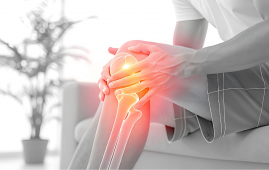

Researchers at the University of Arizona Health Sciences Comprehensive Pain and Addiction Center will use a $2.4 million funding from the US Army Medical Research Acquisition Activity to test the efficacy of green light therapy on postsurgical pain and inflammation.
In 2010, the number of surgeries in the United States surpassed 40 million and has continually climbed since then. At the same time, the opioid crisis is still wreaking havoc across the country. Despite the hazards associated with opioids, they are still the most commonly given drugs for surgical pain management.
“Patients with anxiety, depression or sleep disturbances can experience exaggerated pain, necessitating higher doses of opioids to control their postsurgical pain. Military members and veterans have anxiety, depression and sleep disturbance at rates three to four times greater than civilians. Sadly, they are also at higher risk of opioid use disorder and dependence,” said pain management physician Mohab Ibrahim, MD, PhD, associate director of medical affairs for the Comprehensive Pain and Addiction Center and professor of anesthesiology in the UArizona College of Medicine – Tucson. “Finding a therapy that can decrease reliance on opioids for postsurgical pain would be transformative.”
Previously, Ibrahim and Laurent Martin, PhD, assistant professor of anesthesiology at the University of Arizona College of Medicine – Tucson and a member of the Comprehensive Pain and Addiction Center, discovered that green light therapy reduced chronic pain, anxiety, and depression, and improved sleep in people with migraine and fibromyalgia.
Prior studies discovered that green light can enhance the brain’s inherent ability to alleviate inflammation and pain. Green light acts through a pain area in the brainstem known as the rostral ventromedial medulla, or RVM, according to pre-clinical investigations of chronic and postsurgical pain.
“We have already shown that green light can decrease pain and anxiety in animal models by increasing the production of natural substances in the brain that fights pain and anxiety while also reducing the production of inflammatory substances,” Martin said. “In this study, we will examine whether green light therapy can reverse surgically induced pain by increasing the production of the brain’s natural chemicals that fight pain, preventing the immune cells from being activated and decreasing the inflammatory environment in the RVM.”
Martin, Ibrahim, and the study team will focus on two specific areas: the function of the RVM in causing the pain-relieving effects of green light treatment, and changes in the levels of natural compounds that reduce pain following exposure to green light.
Their long-term aims include reducing the demand for opioids and the impact of the opioid epidemic, reducing hospital stays and comorbidities associated with uncontrolled pain, and bringing green light treatment into clinical practice as soon as possible.
“Nonpharmacological therapies to manage pain are gaining more attention. While some nonpharmacological therapies are commonly used, many others remain underutilized. For example, light therapy has been used medically for depression and seasonal affective disorder; however, its utility for pain control is only newly being investigated,” said Ibrahim, who gave a lecture on recent advances in phototherapy for pain last fall at the Health Sciences Innovation Building in Tucson. “We hope to learn more about how green light affects the pain center of the brain, bringing us one step closer to taking this translational research to clinicians for the ultimate benefit of patients everywhere.”
more recommended stories
 Mild Pancreatic Duct Dilatation Signals Higher Cancer Risk
Mild Pancreatic Duct Dilatation Signals Higher Cancer RiskEarly Structural Changes Offer Critical Clues.
 How the Uterus Senses Force During Labor: New Insights
How the Uterus Senses Force During Labor: New InsightsA new study published in Science.
 Fat-Free Mass and Brain Outcomes in Preterm Babies
Fat-Free Mass and Brain Outcomes in Preterm BabiesEarly Fat-Free Mass May Hold the.
 How Hormones Shape Dopamine-Driven Learning
How Hormones Shape Dopamine-Driven LearningNYU Study on Hormones and Cognitive.
 Protein Pair Guides Chromosome Alignment in Mitosis
Protein Pair Guides Chromosome Alignment in MitosisKey Points A joint research team.
 Intensive mind-body retreat rapidly alters brain function
Intensive mind-body retreat rapidly alters brain functionAn intensive mind-body retreat combining meditation,.
 Citrus and Grape Compounds Help Prevent Type 2 Diabetes
Citrus and Grape Compounds Help Prevent Type 2 DiabetesA new clinical trial highlights the.
 Personalized Pain Care Transforms Parkinson’s Treatment
Personalized Pain Care Transforms Parkinson’s TreatmentNew UniSA research underscores the urgent.
 Genetic Diversity Explains Obesity Risk Differences
Genetic Diversity Explains Obesity Risk DifferencesCross-ancestry Study Identifies Novel Obesity Genes.
 Meniscal Tear and OA Pain Improved by Home Exercise
Meniscal Tear and OA Pain Improved by Home ExerciseHome Exercise Proves Effective for Knee.

Leave a Comment